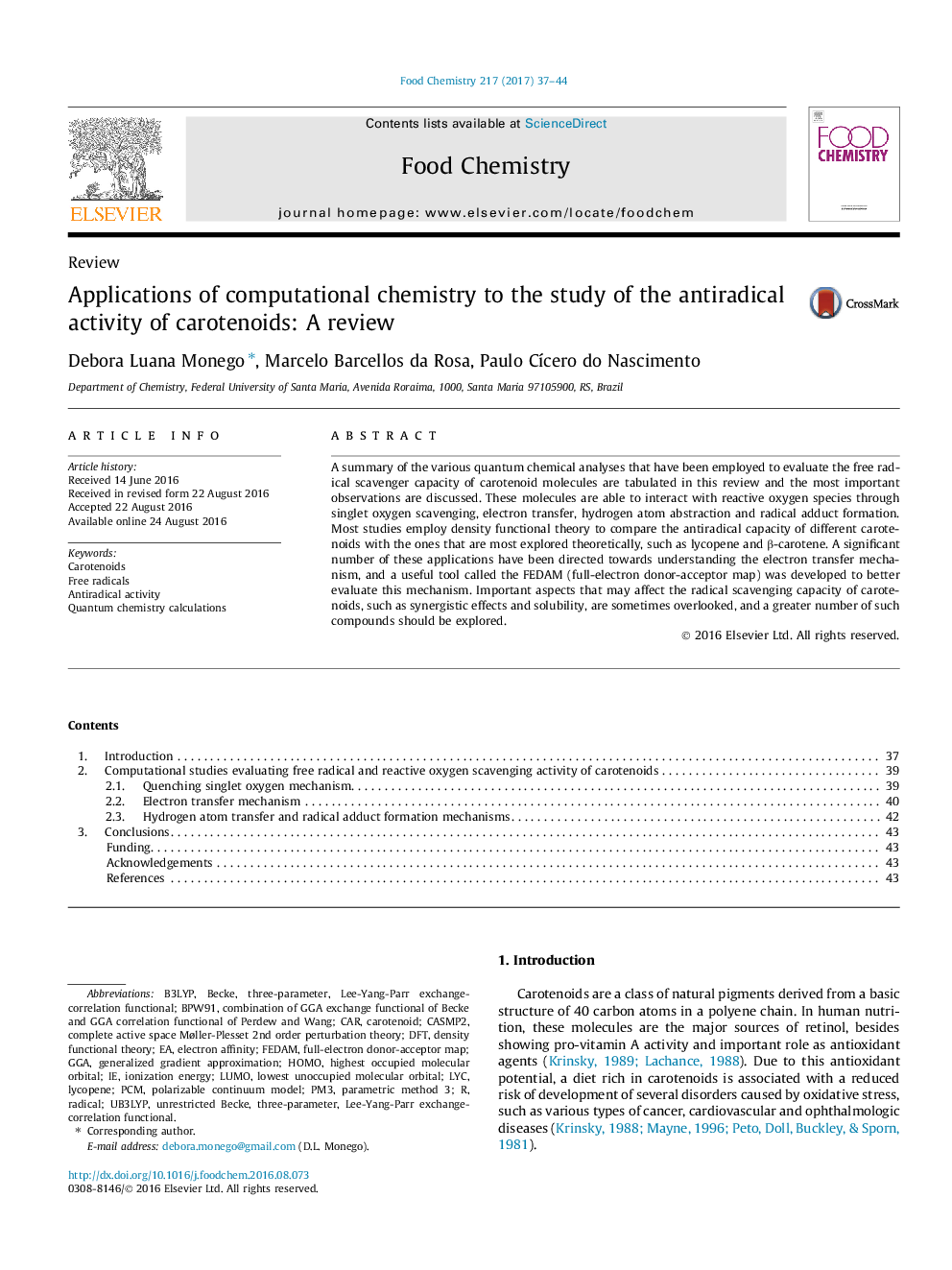| کد مقاله | کد نشریه | سال انتشار | مقاله انگلیسی | نسخه تمام متن |
|---|---|---|---|---|
| 1184727 | 1492075 | 2017 | 8 صفحه PDF | دانلود رایگان |
• Most computational studies apply to the electron transfer mechanism.
• FEDAM arises as an exceptional tool to evaluate carotenoids’ antiradical activity.
• Hydrogen abstraction may be favored according to the radical’s nature.
• The same applies to radical adduct formation.
• Many studies fail to take into account important aspects that alter this activity.
A summary of the various quantum chemical analyses that have been employed to evaluate the free radical scavenger capacity of carotenoid molecules are tabulated in this review and the most important observations are discussed. These molecules are able to interact with reactive oxygen species through singlet oxygen scavenging, electron transfer, hydrogen atom abstraction and radical adduct formation. Most studies employ density functional theory to compare the antiradical capacity of different carotenoids with the ones that are most explored theoretically, such as lycopene and β-carotene. A significant number of these applications have been directed towards understanding the electron transfer mechanism, and a useful tool called the FEDAM (full-electron donor-acceptor map) was developed to better evaluate this mechanism. Important aspects that may affect the radical scavenging capacity of carotenoids, such as synergistic effects and solubility, are sometimes overlooked, and a greater number of such compounds should be explored.
Journal: Food Chemistry - Volume 217, 15 February 2017, Pages 37–44
